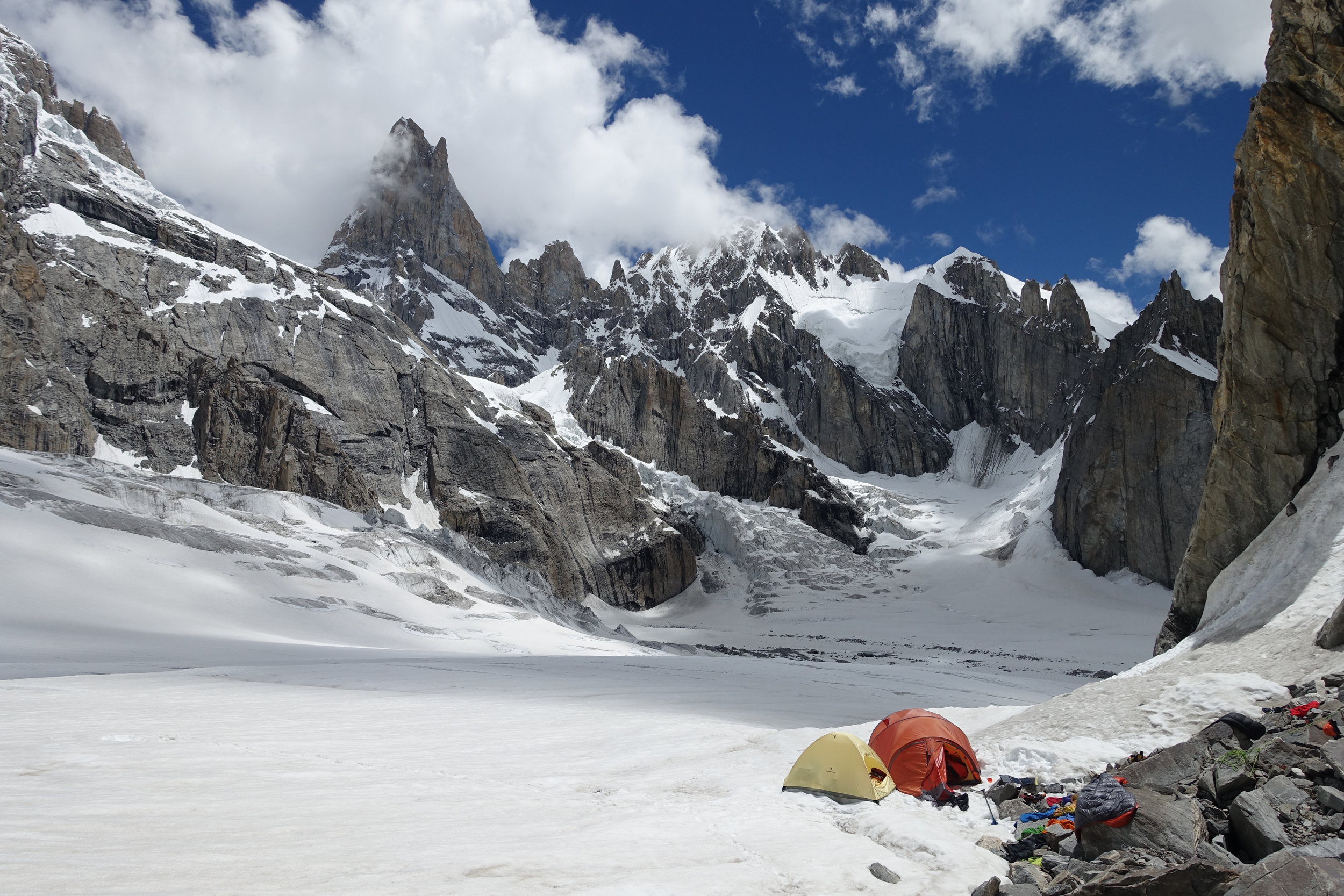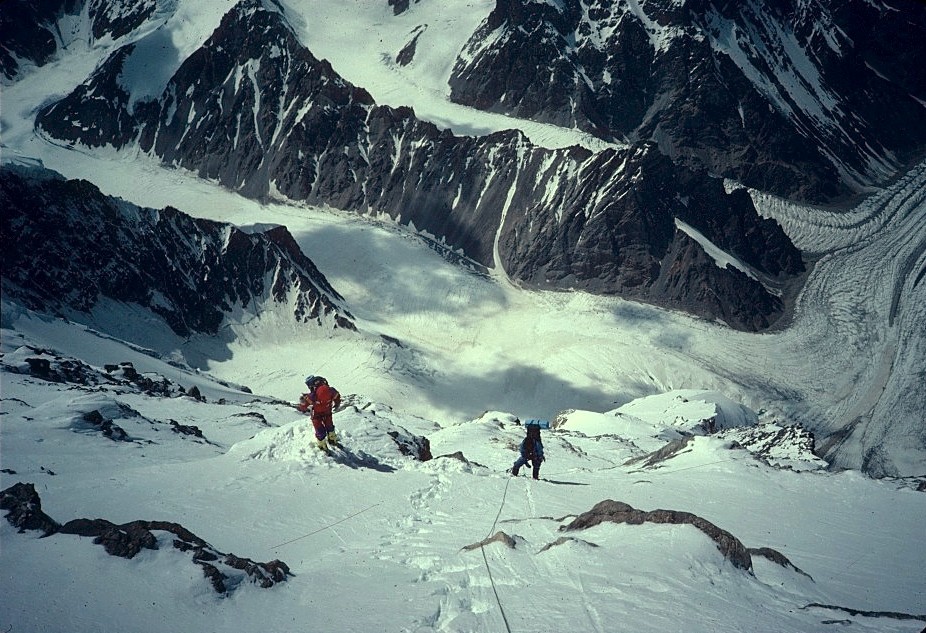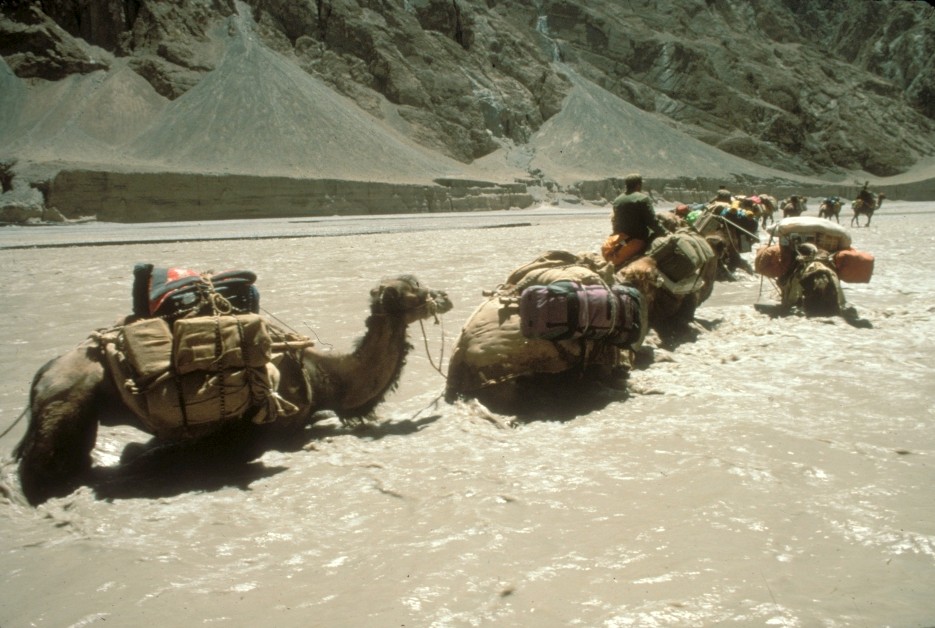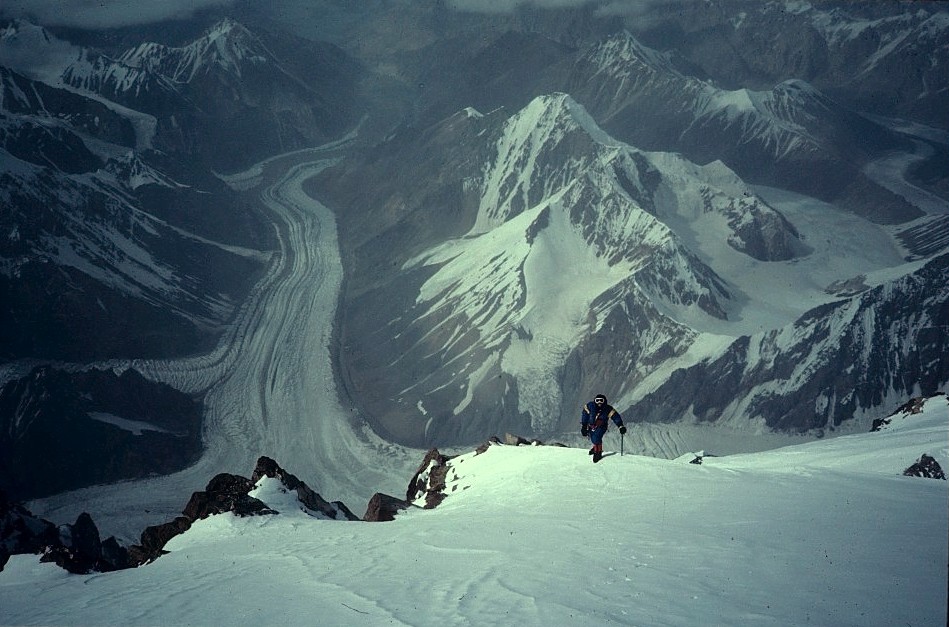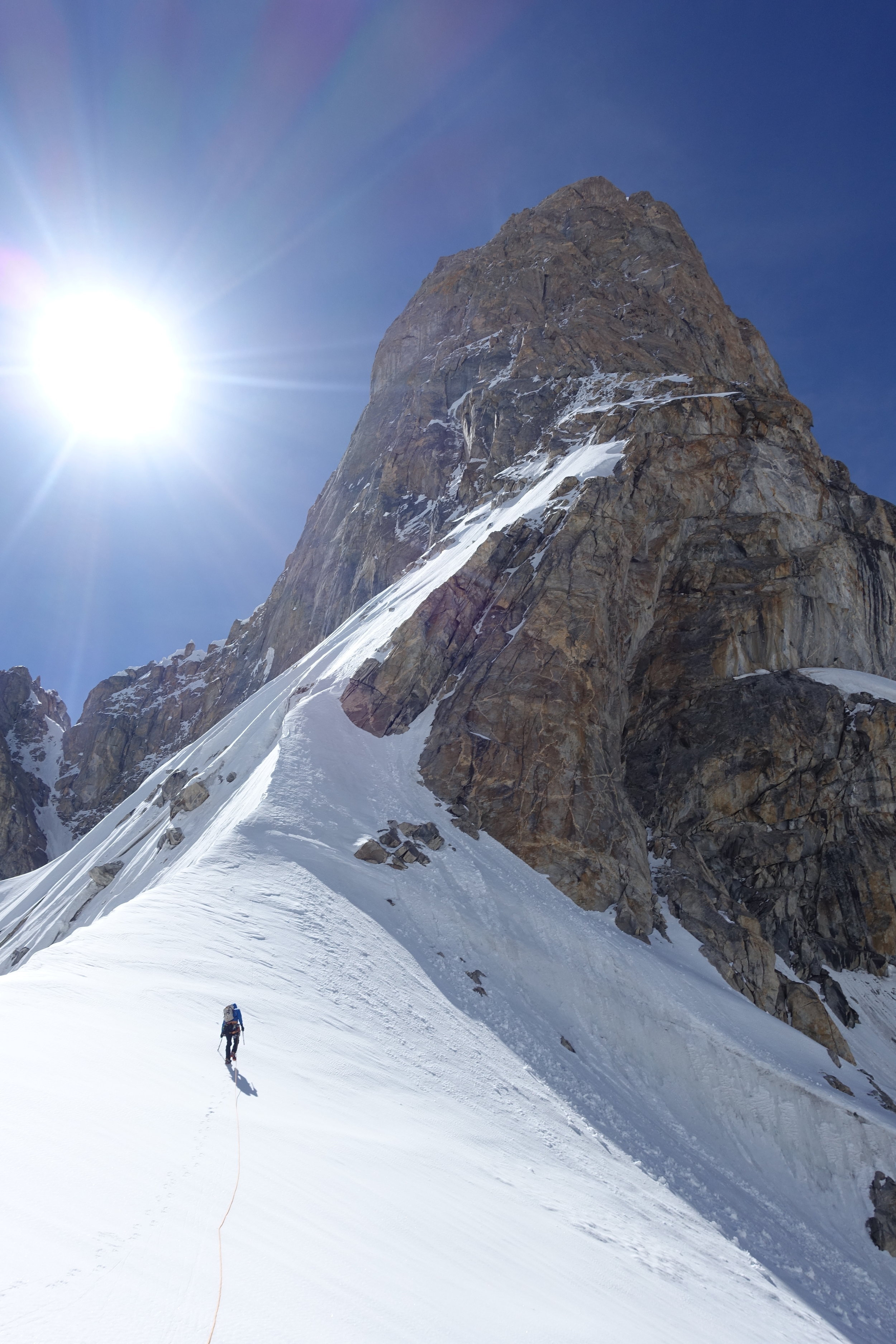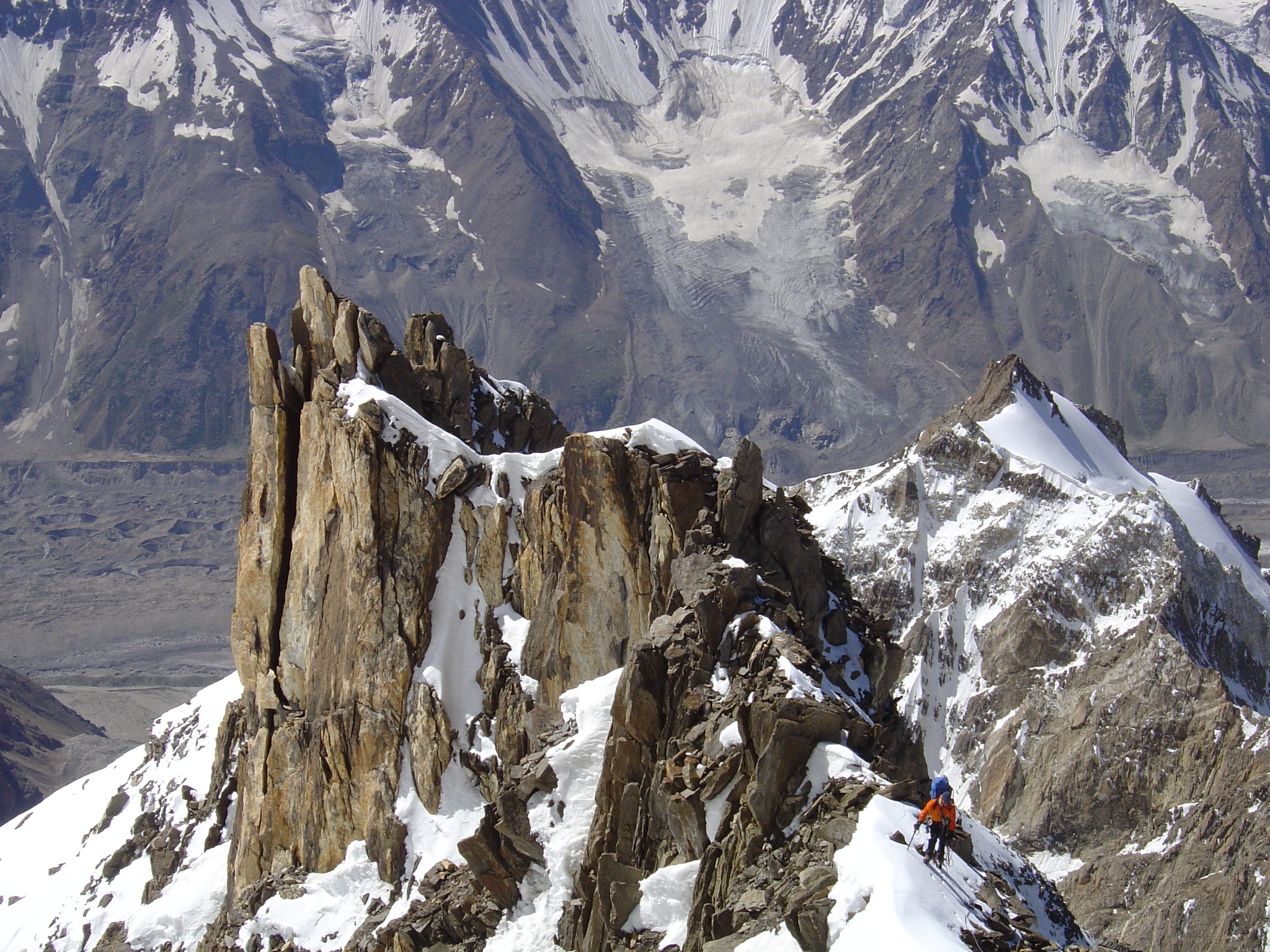Karakoram

We've partnered with Mountaineers Books to bring you the best of their latest releases.
Karakoram Climbing Through The Kashmir Conflict is Steve Swenson’s personal story of adventure in one of the most dangerous mountain environments on the planet. A complex place, the Karakoram Range is located in Kashmir, a western Himalaya border region that has a long history of tension and conflict. Karakoram features Swenson’s personal photography and stories from over more than thirty years climbing there, experiences laced with daunting challenges, exhilarating successes, and terrifying moments—caused by the risks inherent in alpine environments, as well as politics below spilling into the peaks above. The following is an excerpt from his experience on Nanga Parbat with Doug Chabot.
We walked along the rocky ridge, examining the steep rock walls on either side, but we didn’t see any rope. After about fifty feet the horizontal ridge ended, dropping off in all directions into the clouds below. Walking back and forth, we looked for the rope that would lead us to safety, but all we found were several rappel anchors. The horror of our situation dawned on us: We were trapped at the top of this wall without a rope for rappelling and without any fixed rope to use or guide the way. Standing on the rocky ridge, staring down into the clouds, we resisted despair.
It seemed like we had two options, and neither was good. We could climb, exhausted and without water, up 3,000 feet in thigh-deep snow to retrieve our rope at the Mazeno Gap. It was foolish to try this in our debilitated state; we could easily become exhausted and find ourselves unable to move either up or down. Or we could downclimb the steep, unfamiliar rock without a rope in the fog and face the possibility of falling off the mountain if we encountered a steep wall that was too difficult to descend using our hands and feet. Doug wanted to start downclimbing, but I didn’t want to compound our original mistake by rushing into another one. You are never too experienced to make a stupid mistake, and if we made another one now, we might pay for it with our lives.
With the fog swirling around us, we sat on our rocky aerie for nearly three hours trying to come up with a better option to get out of our mess. Suddenly I remembered passing a small loop of old rope protruding from the ice a short distance up the ridge. Maybe we could chop a piece of rope out of the ice that was long enough to get us down. Doug and I climbed up to it and started to hack away at the slope with our ice axes. After three hours we had freed about seventy feet of good half-inch braided nylon rope. We would only be able to make thirty-five-foot rappels with the doubled-up rope, but that would have to do. It was too late to start down, so we were forced to bivouac out in the open. Soon after dark it began to snow, and we spent a miserable night huddled in our sleeping bags with no food or water since we had left all our fuel and supplies at the Mazeno Gap. The one good thing was that after descending to 19,600 feet, I felt much better breathing the thicker air.
After shaking off the fresh snow that covered us during the night, we pulled on our boots, packed up, and started moving by 6:00 a.m. The visibility was still poor, and I was concerned about getting down with only a seventy-foot rope. Doug led the way, and roped together we downclimbed with me holding the rope from above. That way I could protect him on terrain where it would be easy to fall if he dislodged one of the many loose rocks he had to pull or stand on while finding our way down. We tried to follow old rappel anchors, but in the fog we lost track of any signs of the route. We kept descending and eventually spotted an old anchor in a gully and climbed down to it. The rock wall below the old anchor was too steep to downclimb, so we made five or six thirty-five-foot rappels. We used up a lot of the gear we had for making new new anchors without getting very far.
Doug invoked his uncanny sense of direction and insisted we look around a corner. Sure enough, this was the key to our descent. We dropped into an icy gully and backed down, roped together, alternately placing our two ice screws for protection. Eventually we reached a lower-angled slope with rock that was so loose it wouldn’t hold any hardware. So rather than risk pulling the other person off if one of us fell, we scrambled down unroped—but carefully because it was steep enough for a tumble to send either one of us a thousand feet down the mountainside. We continued finding our way down through a series of rocky slopes and ribs, relieved to be losing elevation so quickly.
Just as we thought we were out of our predicament, a rock tower the size of a semitruck collapsed onto the route below us. Doug looked at me in wide-eyed disbelief. In another minute we would have been where the tower had exploded onto the slope. “That was sick,” he exclaimed. We decided to abandon our plan to come back up this route. It was just too loose and dangerous this late in the year when there was no snow cover. Enveloped by mist that clung stubbornly to the hillside, we kept going down, never quite sure where we were until suddenly some old tent platforms, the remnants of Camp I on the Schell Route, appeared on the hillside. We stopped there to rest for about half an hour. It was eerie—the small log walls supporting some of the platforms were falling down, like an archaeological site of an ancient civilization. Below the 16,500-foot camp was a faint trail, and by following our noses downward in the fog, we descended out of the clouds and finally could see the grass, flowers, and running water of the valley floor.
You can purchase Karakoram Climbing Through The Kashmir Conflict from Mountaineers Books here.
A non-profit organization publishing books designed to inspire a lifelong love for the great outdoors.

